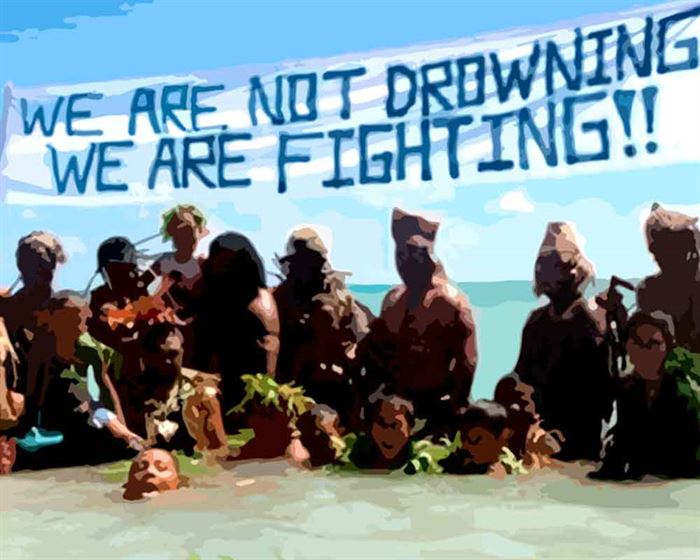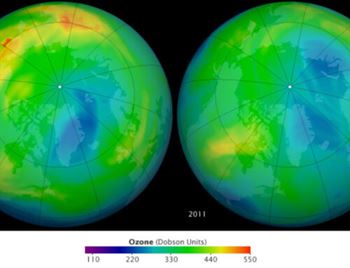Climate Refugees: Nations with only a Passport to Call Home
09/06/2017
Tiempo de lectura: 5 minutos
What are climate refugees?
Despite the prevalence of climate change, the looming threat of a climate refugee crisis remains largely neglected by the international community. Under international law, no official definition or category for climate refugees exists; however, a climate refugee can be defined as a person who is displaced due to environmental disasters, such as sea level rise, droughts, desertification, and severe weather. According to the Internal Displacement Monitoring Centre, since 2008 nearly 26.4 million people per year are forced to relocate because of natural disasters. Yet, through the debate on whether environmental refugees meet the legal criteria of a refugee, which the Geneva Convention defines as a person fleeing persecution or conflict, it reveals the lack of awareness of and action for them.
Impact of climate change
Within the vast Pacific Ocean lies multiple island countries that are victims of climate change, endangering their inhabitants and landscape. Through the release of carbon dioxide, global temperature increases, gradually raising water levels and warming oceans. Since the average elevation of many Pacific islands, such as the Marshall Islands, Tuvalu and Kiribati, is less than three meters, the conditions produced by climate change further jeopardize the existence of these islands. As the ocean warms, it affects the sea ecosystem in which islanders greatly depend on. With high water levels, inundation frequently occur, damaging infrastructure, eroding the foreshore, and killing families and livestock. These rising levels can also contaminate freshwater sources as seawater intrudes into them, inhibiting healthy living conditions. However, the greatest threat of rising sea levels is its ability to gradually sink these islands, leaving islanders stateless and destroying a piece of the Earth.
Case Study – Marshall Islands
As a miniscule chain of 34 islands and atolls in the Pacific Ocean, the Marshall Islands face the impending threat of climate change—of their nation disappearing—that is often ignored by the international community. While the United States and other top polluters profit from fossil fuel, they undermine the physical repercussions endured by the Marshall Islands, which have an average elevation of two meters. Throughout these islands, king tides, the most dangerous waves, engulf towns, flooding streets and destroying homes and infrastructure. As a result, the Marshallese are forced to internalize and prepare for the destructive reality of climate change. Yet, the importance of maintaining the landscape and culture of these frequently forgotten islands is not only detrimental to the Marshallese but to the world as a whole.
Within the Marshallese culture, the island’s landscape connects its inhabitants with their ancestors and strengthens their identity, hindering many from abandoning their country. The potential loss of their landmarks can endanger the existence of the Marshallese identity and culture. Although cultural preservation, a form of climate adaption, occurs on the islands and in the diaspora, it proves to be ineffective without the landscape, inhibiting future generations from fully embracing their indigenous culture. Additionally, as a result of the severe weather conditions and rising sea levels, numerous Marshallese have already migrated to other countries. However, by leaving the landmarks that are vital to their culture, many Marshallese succumb to assimilation, causing migration in response to climate change to prevail as an impending threat to the Marshallese culture.
Since the loss of the Marshall Islands and culture could potentially produce a refugee crisis and harm global cultural diversity, it forces the rest of the world to gradually recognize the impact of climate change. As the islands slowly sink, the Marshallese are searching for a new home, compelling countries to respond to the consequences of climate change. For instance, due to the 1986 Compact of Free Association, the US established military bases on the islands in exchange for the Marshallese´s ability to migrate to America, inevitably forcing US leaders to consider the impact of such migration. However, as the potential elimination of the Marshallese culture prevails, it threatens the existence of multiculturalism and endangers its traditions and stories. Thus, even though the Marshall Islands seem tiny and insignificant to powerful and industrialized countries, their endangered culture and displacement will hinder global cultural diversity and provoke a refugee crisis as a result of these countries’ carbon dioxide production.
Although the Marshall Islands are pursuing climate adaption strategies, there are several ways individuals can assist in reducing the Earth’s carbon footprint. Unlike others facing the existential threat of climate change, the Marshall Islands have opted out of purchasing land for resettlement. Choosing to fight their potential demise to safeguard their land and culture, the islands build seawalls—the sole barrier that protects them from the inundations that ravage their towns. Other short-term policies, such as the potential creation of a landfill and an early warning system, are also being pursued. By using the United Nations as a political platform, the inhabitants strongly advocate for the reduction of carbon emissions by top polluters. Regardless of the distance between someone’s home and these islands, each individual has the ability to help palliate climate change through these simple tips:
• Contact political representatives to demand action on climate change
• Choose renewable energy
• Be more energy efficient
• Select the proper transportation system
• Become more aware and educate others on climate change issues
Even though many industrialized countries are not immediately impacted by the potential disappearance of several Pacific Islands, they will eventually face the consequences of their inactive policies.. Through the environmental conditions of these islands and the increase displacement of climate refugees, it raises the question of whether countries that heavily contribute to climate change should take more responsibility for its damaging consequences. Additionally, the gradual sinking of the Pacific Islands emphasizes the adoption of an international framework that officially recognizes climate refugees and pursues active policies to combat climate change, hopefully saving the Marshal Islands and its culture from disappearing.
Christina Tatum
Fotografía: AOSIS (Alliance of Small Island States) http://aosis.org/








